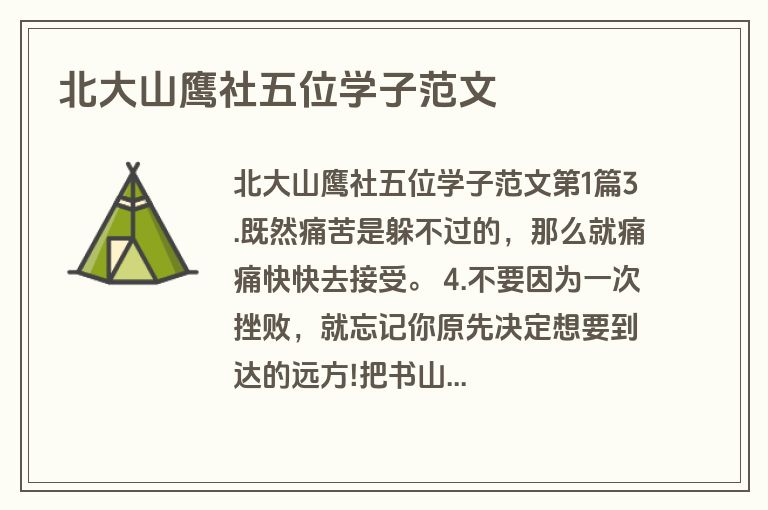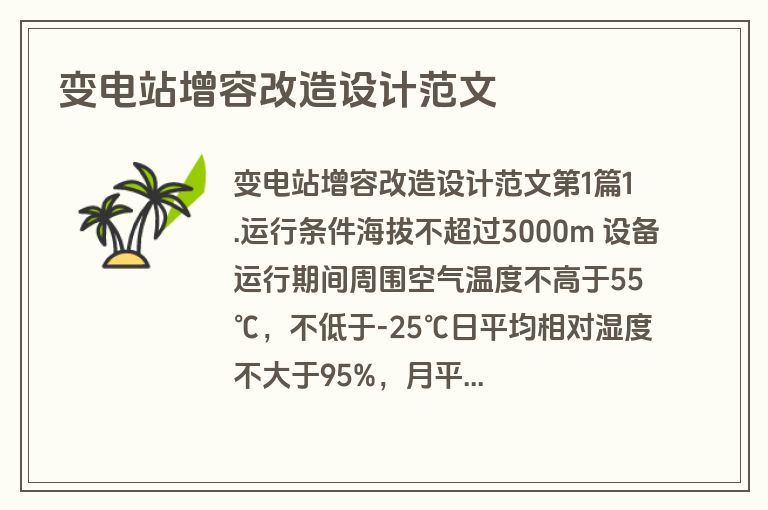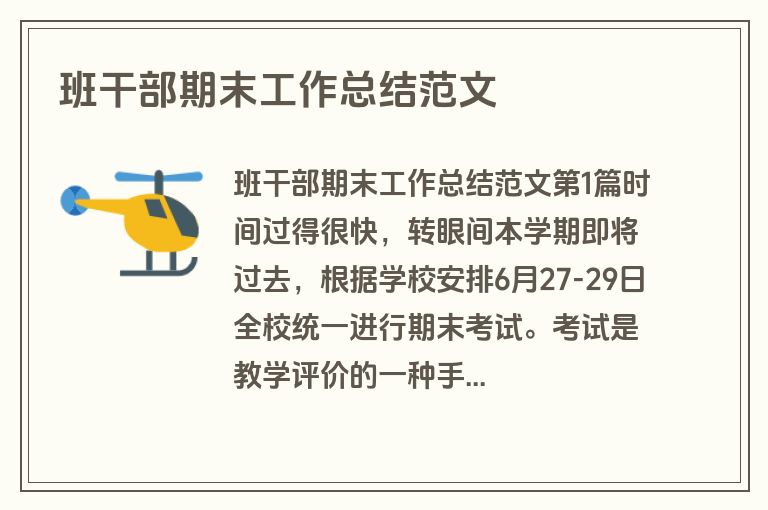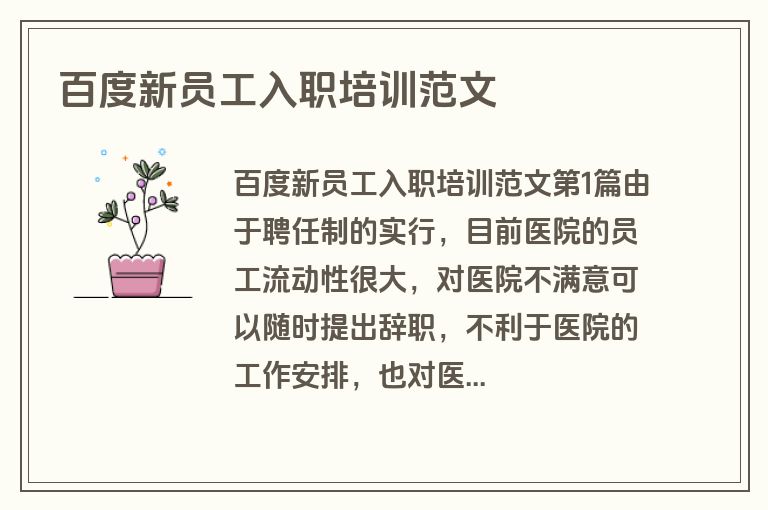黄鹤楼的赏析范文第1篇
此诗前四句抒写人去楼空、世事苍茫的慷慨,后四句描绘登楼所见,烘托思乡之情,视野开阔,抒情真挚,为咏黄鹤楼的绝唱。传说李白登黄鹤楼,曾想写诗,见到此诗佩服之至,并说:“眼前有景道不得,崔颢有诗题上头。”仙去楼空,唯余天际白云,悠悠千载,正能表现世事茫茫之慨。诗人这几笔写出了那个时代登黄鹤楼的人们常有的感受,气概苍莽,感情真挚。
此诗前半首用散调变格,后半首就整饬归正,实写楼中所见所感,写从楼上眺望汉阳城、鹦鹉洲的芳草绿树并由此而引起的乡愁,这是先放后收。此诗转折处,格调上由变归正,境界上与前联截然异趣,恰好符合律法的这个要求。叙昔人黄鹤,杳然已去,给人以渺不可知的感觉;忽一变而为晴川草树,历历在目,萋萋满洲的眼前景象,这一对比,不但能烘染出登楼远眺者的愁绪,也使文势因此而有起伏波澜。
黄鹤楼古诗赏析 【注释】
①昔人:指传说中的仙人。②黄鹤楼:旧址在今武汉长江大桥桥头处。 ③历历:清楚分明。④汉阳:指今武汉市汉阳县一带。 ⑥鹦鹉洲:在今武汉西南长江中。
【译文】
前人早已乘着黄鹤飞去,这里留下的只是那空荡荡的黄鹤楼。黄鹤飞去后就不再回还,千百年来只有白云悠悠飘拂。晴朗的汉江平原上,是一片片葱郁的树木和茂密的芳草,它们覆盖着鹦鹉洲。天色渐暗,放眼远望,何处是我的故乡?江上的烟波迷茫,使人生出无限的哀愁。
【赏析】
前人有“文以气为主”之说,此诗前四句看似随口说出,一气旋转,顺势而下,绝无半点滞碍,黄鹤,二宇再三出现,却因其气势奔腾直下,使读者“手挥正弦,目送飞鸿”,急忙读下去,无暇觉察到它的重叠出现,而这是律诗格律上之大忌,诗人好象忘记了是在写“前有浮声,后须切响”、宇宇皆有定声的七律。
试看:首联的
五、六字同出“黄鹤”;第三句几乎全用厌声;第四句又用“空悠悠”这样的三卒阅煞尾;亦不顾什么对仗,用的全是古体诗的句法。这是因为七律在当时尚未定型吗?不是的,规范的七律旱就有了,崔颢自已也曾写过。是诗人有意在写拗律吗?也未必。他跟后来杜甫的律诗有意自创别调的情况也不同。看来还是知之而不顾,如《红楼梦》中林黛玉教人做诗时所说的,“若是果有了奇句,连平仄虚实不对都使得的”。
在这里,崔颇是依据诗以立意为要和“不以词害意”的原则去进行实践的,所以才写出这样七律中罕见的高唱入云的诗句。沈德潜评此诗,以为“意得象先,神行语外,纵笔写去,遂擅千古之奇”(《唐诗别裁》卷十三),也就是这个意思。倘只放不收,一味不拘常规,不回到格律上来,那么,它就不是一首七律,而成为七古了。此诗前后似成两截,其实文势是从头一直贯注到底的,中间只不过是换了一口气罢了。这种似断实续的连接,从律诗的起、承、转、合来看,也最有章法。元杨载《诗法家数》论律诗第二联要紧承首联时说:“此联要接破题(首联),要如骑龙之珠,抱而不脱。”此诗前因旬正是如此,叙仙人乘鹤传说,额联与破题相接相抱,浑然一体。杨载又论颈联之“转”说:“与前联之意相避,要变化,如疾雷破山,观者惊愕。”疾雷之喻,意在说明章法上至
五、六句应有突变,出人意外。
此诗转折处,格调上由变归正,境界上与前联截然异趣,恰好符合律法的这个要求。叙昔大黄鹤,否然已去,给人以渺不可知的感觉;忽一变而为睛川草树,历历在目,妻妻满洲的眼前景象,这一对比,不但能烘染出登楼远眺者的愁绪,也使女势因此而有起伏波澜。《楚辞招隐士》曰:“王孙游分不归,春草生分萋萋。”诗中“芳草萋萋”之语亦借此而逗出结尾乡关何处、归思难禁的意思。
末联以写烟波江上日暮怀归之情作结,使诗意重归于开头那种渺茫不可见的境界,这样能回应前面,如豹尾之能绕额的“台”,也是很符合律诗法度的。
正是由于此诗艺术上出神入化,取得极大成功,它被人们推崇为题黄鹤楼的绝唱,就是可以理解的了。
酬乐天扬州初逢席上见赠- 巴山楚水凄凉地,二十三年弃置身。 怀旧空吟闻笛赋,到乡翻似烂柯人。 沉舟侧畔千帆过,病树前头万木春。 今日听君歌一曲,暂凭杯酒长精神。 注释
(1)酬:答谢,这里是以相答的意思。
(2)乐天:指白居易,字乐天。
(3)巴山楚水:古时四川东部属于巴国,湖南北部和湖北等地属于楚国。刘禹锡曾被贬到这些地方做官,所以用巴山楚水指诗人被贬到之地。
(4)二十三年:从唐顺宗永贞元年(805年)刘禹锡被贬为连州刺史到写此诗时,共22个年头,因第二年才能回到京城,所以说23年。
(5)弃置身:指遭受贬谪的诗人自己。
(6)闻笛赋:指西晋向秀的《思旧赋》。三国曹魏末年,向秀的朋友嵇康、吕安因不满司马氏篡权而被杀害。后来,向秀经过嵇康、吕安的旧居,听到邻人吹笛,勾起了对故人的怀念。序文中说:自己经过嵇康旧居,因写此赋追念他。刘禹锡借用这个典故怀念已死去的王叔文、柳宗元等人。
(8)怀旧:怀念故友。
(7)翻似:倒好像。翻:副词,反而。
(9)烂柯人:指晋人王质。相传晋人王质上山砍柴,看见两个童子下棋,就停下观看。等棋局终了,手中的斧把已经朽烂。回到村里,才知道已过了一百年。同代人都已经亡故。作者以此典故表达自己遭贬23年的感慨。刘禹锡也借这个故事表达世事沧桑,人事全非,暮年返乡恍如隔世的心情。
(10)长(zhǎng)精神:振作精神。长:增长,振作。 注音
凄凉(qīliáng)赋(fù)柯(kē)畔(pàn)暂(zàn)凭(píng)长(zhǎng) 译文
巴山楚水一片荒远凄凉,二十三年来,我被朝廷抛弃在那里。回到家乡熟悉的人都已逝去,只能吟着向秀闻笛时写的《思旧赋》来怀念他们,而自己也成了神话中那个烂掉了斧头的人,已无人相识,真令人恍如隔世啊。我如同一艘沉船,新贵们好比千帆竞渡,飞驰而过,又如一棵病树,眼前都是万木争春,生机盎然。今天听到你为我歌唱的那一曲,就凭借这杯水酒重新振作起精神吧。
赏析 “乐天”,白居易的表字。“见赠”指白居易赠给作者的诗,那首诗的最后两句说:“亦知合被才名折,二十三年折太多。”刘禹锡的这首答谢诗就是从这里开头的:“巴山楚水凄凉地,二十三年弃置身。”意思是他被贬低到巴山楚水这些荒凉的地区,二十三年就如同弃置在道旁一样。刘禹锡想改革时弊,遭到打击,被贬到朗州(在今湖南省)、连州(在今广东省)、夔州(在今四川省)等地。夔州属于古代巴国。朗州、连州等属于古代楚国。这些地区古代都很荒凉,所以用“巴山楚水凄凉地”来概括。“凄凉地”,指寂寞冷落的地区。这两句写出了作者长期被贬的愤慨心情。贬谪到异地,空有怀念老朋友的心情也无由见面,一再吟诵《思旧赋》也没有用,所以说“空吟”。写出了作者对旧友(王叔文)的怀念。
“闻笛赋”,指向秀的《思旧赋》。西晋时,向秀、吕安和嵇康是好朋友,嵇康因不满当时掌握政权的司马氏集团而被杀。向秀很悲痛,一次他从嵇康的旧居路过,听到有人在吹笛子,笛声使他想起被杀害的好友,就以悲愤的心情写了一篇《思旧赋》来悼念嵇康,从侧面显示出对时政的不满。刘禹锡借这个典故寄托了他对因参与政治改革而被害致死的老友的怀念。“烂柯人”的典故见《述异记》,晋朝时有一位叫王质的人,有一天他到信安郡的石室山(今浙江省衢qu县)去打柴。看到一童一叟在溪边大石上正在下围棋,于是把砍柴用的斧子放在溪边地上,驻足观看。看了多时,童子说“你该回家了”,王质起身去拿斧子时,一看斧柄(柯)已经腐朽了,磨得锋利的斧头也锈的凸凹不平了。王质非常奇怪。回到家里后,发现家乡已经大变样。无人认得他,提起的事,有几位老者,都说是几百年前的事了。原来王质石室山打柴误入仙境,遇到了神仙,仙界一日,人间百年作者借这个典故来比喻自己长期贬谪在外,乍回京城乡,仿佛有隔世之感。
白居易的赠诗中有“举眼风光长寂寞,满朝官职独蹉跎”这样两句,意思是说同辈的人都升迁了,只有你在荒凉的地方寂寞地虚度了年华,颇为刘禹锡抱不平。对此,刘禹锡在酬诗中写道:“沉舟侧畔千帆过,病树前头万木春。”刘禹锡以沉舟、病树比喻自己,固然感到惆怅,却又相当之达观。沉舟侧畔,有千帆竞发;病树前头,正万木皆春。他从白诗中翻出这二句,反而劝慰白居易不必为他的寂寞、蹉跎而忧伤,对世事的变迁和仕宦的升沉,表现出豁达的襟怀。这两句诗意又和白诗“命压人头不奈何”、“亦知合被才名折”相呼应,但其思想境界要比白诗高,意义也深刻得多了。二十三年的贬谪生活,并没有使他消沉颓唐。正像他在另外的诗里所写的:“莫道桑榆晚,为霞犹满天。”他这棵病树仍然要重添精神,迎上春光。“沉舟”二字描写形象生动,深刻地反映了事物的变化发展规律,因而成为广为传诵的名句。至今仍常常被人引用,并赋予它以新的意义,说明新事物必将取代旧事物。(哲理)
末尾两句又回到席上酬答赠言上来,意思是:“今天听到您唱的这支歌曲(指白居易赠给他的诗),就暂且凭借酒的力量,来增长我继续努力的精神吧!”诗人没有一味消沉下去,他笔锋一转,又相互劝慰,相互鼓励了。他对生活并未完全丧失信心。诗中虽然感慨很深,但读来给人的感受并不是消沉,相反却是振奋。
总体来说,诗的首联以伤感低沉的情调,回顾了诗人的贬谪生活。
颔联,借用典故暗示诗人被贬时间之长,表达了世态的变迁以及回归以后生疏而怅惘的心情。 颈联是全诗感情升华之处,也是传诵千古的警句。诗人把自己比作“沉舟”和“病树”,意思是自己虽屡遭贬低,新人辈出,却也令人欣慰,表现出他豁达的胸襟。
尾联顺势点明了酬答的题意,表达了诗人重新投入生活的意愿及坚韧不拔的意志。
2 全诗起伏跌宕,沉郁中见豪放,是酬赠诗之上品!
7.B(该项正确理解是:运用两个典故,表达诗人对受害友人的悼念,对岁月流逝、人事变迁的感叹,充满无限悲痛怅惘之情)
8.(1)此联表现了诗人身经危难,仍保持坚定的意志和积极乐观的精神(或“虽身经危难却不消极气馁,而是保持积极进取的乐观精神和百折不回的坚强毅力”)(意思对即可)(2分)
(2)告诉人们:旧事物必将消逝,新事物必将发展起来,社会在前进,前景无限美好(如回答“包含着新陈代谢的规律”亦可)(1分)
1.答题要点:诗人远离京城,身处荒僻之地,长期被弃用 评分标准:2分,每点各1分,意对即可 2.答题要点:①“沉舟”、“病树”是诗人自喻,饱含感慨身世、惆怅忧伤之情;②但他对未来并不失望,坚信“沉舟侧畔”,必然有“千帆”竞渡,“病树前头”,终究会“万木”争春,表现出诗人豁达豪迈的胸襟
评分标准:两点各1分,计2分,意思对即可
没落的事物就让它没落吧,新生的事物必然蓬勃发展起来,社会在前进,前景无限美好(或新事物必将替代旧事物)(2分) 典故抒发的思想感情
①对亲旧凋零的伤痛、人事全非的怅惘
②暗示贬谪时间长久,表现了对世态变迁的怅惘心情
9、名句赏析
1)人在逆境面前,要积极进取,振作精神,面向未来(要有坚定的意志和必胜的信念);2)痛苦、困难、挫折、失意都是暂时的,理想、光明、胜利就在前头;3)新事物必将带起旧事物,这是事物发展的必然规律
赤
壁
杜 牧
折戟沉沙铁未销,自将磨洗认前朝 东风不与周郎便,铜雀春深锁二乔
在晚唐时代,杜牧是杰出的诗人为了区别于杜甫,后人叫杜牧为“小杜”他的七言绝句达到了很高的成就,意境清新,气势纵横,凝练而自然同时代中,只有李商隐和他异曲同工,所以也并称“李杜” 汉献帝建安十三年,曹操统一了北方以后,乘着割据荆州的军阀刘表死了,就出兵平定荆州寄居在荆州的刘备进行抵挡,也被击溃曹操收集荆州归附的部队,加上原有的人马,总共五十余万人,号称八十万,沿江东下,水陆并进,追击刘备,想要乘战胜的军威,削平孙权在东吴的势力这时候,曹操是声势逼人,有不可一世的气概
孙权为了抵抗,就和刘备组成联军,但是只有几万人两军在赤壁打了一仗,结果曹军大败,仓皇北逃这一战役,奠定了中国历史上魏蜀吴三国鼎峙的局面
“赤壁之战”是我国历史上有名的以少胜多的战役之一,它的实际指挥者是吴国的大将军周瑜,这位年轻而具有多方面才能的将领,后人习惯称之为“周郎”
六百多年过去了,九世纪的诗人杜牧,来到赤壁,凭吊这个古代战场的遗址,写下了咏怀古迹的诗,自然有它的感慨和寄托
诗人在这个传说中的古战场徘徊,他在凭吊,在联想,然而,能见到什么呢?只是“云山苍苍,江水泱泱”但是,总想找到一点战场的遗迹!汉末的兵器是戈、矛、戟、剑之类,大都是铁制的经过一场大战,兵器折毁,掉在地上,再经过久远的年代,又被沙土埋掉了这时候,诗人偶然拾到一片废铁这能不能断定是那次战争中的遗物呢?这就先要磨掉铁锈洗净泥沙,才能够鉴定这种工作,需要有相当的历史知识,所以只能“自将”自己拿来磨洗了经过鉴定,确认是赤壁大战的兵器,就更加证实了历史的传闻于是对史事回忆,许多感慨,都涌上心头 “赤壁之战”,周瑜以少胜多,利用的是火攻火攻能成功,关键在于东风,因为当时两军对峙,孙刘联军在东,曹军在西有了东风,才能顺风放火,烧掉曹军的船只,取得胜利诗人在这里出人意外地设问:假若东风不来,它不给周瑜这个方便,战局的发展会怎样呢?那样的话,曹操拥有十倍以上的兵力,完全有可能击溃联军的抵抗“铜雀春深锁二乔”,就是这种假想的结果
原来吴国有个乔公,生了两个姑娘,都长得很漂亮:大姑娘人称大乔,嫁给了孙权的哥哥孙策孙策此时已经死去,所以大乔就成了遗孀小姑娘人称小乔,就是周瑜的夫人姊妹俩合称“二乔”“铜雀”呢?曹操在他的根据地邺修建了一座铜雀台,楼顶立有一丈五尺高的大铜雀,所以叫铜雀台这里住着曹操的姬妾“春深”两字,固然是指自然界的春光灿烂,同时也暗示妖娆的女人,轻柔的歌舞,封建统治者的腐朽的生活情趣如果要把二乔也锁闭在铜雀台中,不彻底消灭孙刘联军是办不到的反过来说,连二乔都为敌人所有了,那
3 么,孙吴的事业也荡然无存,不可能再留下别的什么了
前两句诗写得那么深情关注,似乎很重视这场古代的战争后两句却不那么一本正经了,写得有点诙谐,近于说俏皮话,又似乎在贬低周瑜,说他只是侥幸成功其实不然,杜牧是在感叹建立一番事业,非得有一定的条件不可如果这样的条件不具备,即使英雄人物,也一样无能为力这是婉转曲折地借怀古以抒发自己的悲哀
杜牧是唐代一位有才华的诗人,在政治上有抱负,善于谈兵,希望做一番事业可是一辈子受着顽固保守的大官僚的压抑,不得有所作为所以,借周瑜的往事,以寄托自己的抑郁心情 赤壁 杜牧
折戟沉沙铁未销,自将磨洗认前朝 东风不与周郎便,铜雀春深锁二乔
①初中三年中,我们学习了许多唐诗:有的咏史,有的咏物;有的描写清新美丽的山水 田园,有的刻划奇特壮美的塞外风光上面这首诗属于哪一类?这类诗最突出的特点是什么? 答: ②试说说"东风不与周郎便,铜雀春深锁二乔"的深刻含义
答:咏史诗特点是咏史抒怀或借史实抒发作者情感(答出"咏史"给1分,答出特点给1分,意思相近即可) 答:"这两句诗表达了作者对历史兴亡的慨叹,他认为历史上英雄的成功都有某种机遇"或"只要有机遇,相信自己总会有作为,反映出作者抑郁不平的心境" (答怀才不遇,有志不得伸等也可) (以上两点,答到任何一点都得2分) (一) 欣赏下面一首古诗,回答问题 (4分) 赤
壁 杜牧
折戟沉沙铁未销,自将磨洗认前朝 东风不与周郎便,铜雀春深锁二乔
(选自语文鄂教版七年级[上]人教版八年级[下]) 20.前两句诗在全诗中的作用是什么?
答:诗的前两句借一件古物来兴起对前朝人物和事件的慨叹或前两句写兴感之由说明:两种答案任答一种均给2分
21.若将“铜雀春深锁二乔”换成“国破家亡在此朝”好不好?为什么?
答:不好以二乔的命运形象代表东吴的命运,更能体现诗句的形象性;能以小见大,感情表达更含蓄说明:从诗句的形象性或感情的含蓄性任一方面答均可
过零丁洋
辛苦遭逢起一经,干戈寥落四周星。山河破碎风飘絮,身世浮沉雨打萍。惶恐滩头说惶恐,零丁洋里叹零丁。人生自古谁无死,留取丹心照汗青。
25.从诗歌颔联中可以看出国家和诗人分别处在一种怎么样的境地?(3分)
颔联写出了大宋国势的危亡和诗人一生坎坷,时起时沉的命运。(意思近即可)
26.诗的尾联是千古的名句,请分析诗人在此联中所表达的思想感情。(3分)
黄鹤楼的赏析范文第2篇
作者:崔颢昔人已乘黄鹤去,此地空余黄鹤楼。黄鹤一去不复返,白云千载空悠悠。晴川历历汉阳树,芳草萋萋鹦鹉洲。日暮乡关何处是,烟波江上使人愁。【注解】:1、黄鹤楼:故址在湖北武昌县,民国初年被火焚毁,传说古代有一位名叫费文
的
仙人,在此乘鹤登仙。也有人作昔人已乘白云去。2、悠悠:久远的意思。3、历历:清晰、分明的样子。4、鹦鹉洲:在湖北省武昌县西南,根据后汉书记载,汉黄祖担任江夏太守时,在此大宴宾客,有人献上鹦鹉,故称鹦鹉洲。【崔颢《黄鹤楼》唐诗配图片赏析】崔颢《黄鹤楼》唐诗配图片赏析。【韵译】:传说中的仙人早乘黄鹤飞去,这地方只留下空荡的黄鹤楼。飞去的黄鹤再也不能复返了,唯有悠悠白云徒然千载依旧。汉阳晴川阁的碧树历历在目,鹦鹉洲的芳草长得密密稠稠,时至黄昏不知何处是我家乡?面对烟波渺渺大江令人发愁!【评析】:
黄鹤楼的赏析范文第3篇
作者:崔颢昔人已乘黄鹤去,此地空余黄鹤楼。黄鹤一去不复返,白云千载空悠悠。晴川历历汉阳树,芳草萋萋鹦鹉洲。日暮乡关何处是,烟波江上使人愁。【注解】:1、黄鹤楼:故址在湖北武昌县,民国初年被火焚毁,传说古代有一位名叫费文
的
仙人,在此乘鹤登仙。也有人作昔人已乘白云去。2、悠悠:久远的意思。3、历历:清晰、分明的样子。4、鹦鹉洲:在湖北省武昌县西南,根据后汉书记载,汉黄祖担任江夏太守时,在此大宴宾客,有人献上鹦鹉,故称鹦鹉洲。【崔颢《黄鹤楼》唐诗配图片赏析】崔颢《黄鹤楼》唐诗配图片赏析。【韵译】:传说中的仙人早乘黄鹤飞去,这地方只留下空荡的黄鹤楼。飞去的黄鹤再也不能复返了,唯有悠悠白云徒然千载依旧。汉阳晴川阁的碧树历历在目,鹦鹉洲的芳草长得密密稠稠,时至黄昏不知何处是我家乡?面对烟波渺渺大江令人发愁!【评析】:
黄鹤楼的赏析范文第4篇
原文
昔人已乘黄鹤去,此地空余黄鹤楼。 黄鹤一去不复返,白云千载空悠悠。 晴川历历汉阳树,芳草萋萋鹦鹉洲。 日暮乡关何处是?烟波江上使人愁。
赏析
黄鹤楼旧址在今湖北省武汉市长江大桥武昌桥头。相传始建于三国东吴黄武二年(223)。武昌古时叫鄂州。据《元和郡县志》记载:“鄂州城西临大江,西南角因矶名楼,为黄鹤楼。”也有传说记载,三国时一个名叫费文祎的人登仙,曾乘黄鹤在此楼休息,因此得名黄鹤楼。这使千年古楼蒙上了神奇色彩,更加闻名天下。
“昔人已乘黄鹤去,此地空余黄鹤楼。”诗人漫游到了这里,乘兴登临,首先诵出了这样的诗句是很自然的。这个起句语言明白晓畅,表面上看没有什么辞采,但感情放纵恣肆,借助于楼名的传说,却能一下子将人们带进一个神话境界,引发出无限遐思。从这点说,这首诗的起句笔势突兀陡峭,引人入胜,寓奇崛于平易之中。面对历史陈迹,不免浮想联翩,“已乘”和“空余”,“昔人”与“此地”,两相映衬,凝成了古今变化、物是人非的巨大感慨,深刻地表达了诗人登楼之初的浩然情怀。 “黄鹤一去不复返,白云千载空悠悠。”颔联由神话传说回到了现实感受。诗人登上了古楼,纵目远眺,只见碧空浩渺,白云悠悠。这样空茫的境界不免又使仕途坎坷的诗人产生人世彷徨的无限惆怅。诗人在这里突破了格律的限制,没有苛求对仗工整,词性和声律似对非对,前对后不对,但读起来音节浏亮,一气贯注,显得自然流动,并不着力。
颈联两句对仗则非常精美工稳了。“晴川历历汉阳树,芳草萋萋鹦鹉洲。”绘出了一幅绚丽的大江景色。当诗人的视线从远处的天际回落到地面景物的时候,首先映入眼帘的,就是与黄鹤楼隔江相望的汉阳。那里,绿树掩映,汉水交汇,在明丽的阳光下,看上去分外清晰,江面,只见一丘沙洲隆起江心,这就是鹦鹉洲了。东汉末年的文人弥衡,曾在洲上作过《鹦鹉赋》,弥衡被江夏太守黄祖杀于洲上,后人便改洲名为鹦鹉洲,作为纪念。弥衡素有文气,但怀才不遇,终遭不幸,如今只剩下一片芳草萋萋。诗人见景生情,不由地联想到自己的漂零身世。虽然他以如椽的大笔为眼前的景物勾勒出一幅色彩鲜丽,形象优美的图画:红艳的阳光,白亮的浪花,浓绿的树木,但是景色虽好,终究还是异乡的土地啊!
于是,那惆怅的情怀就自然地转化为无尽的乡愁了。“日暮乡关何处是,烟波江上使人愁。”末联描绘的江面已是一片暮霭,仿佛笼罩着烟雾一般。“烟”字能表现出一种朦胧、弥漫、飘忽的景象。为许多诗人喜用。崔颢在这里用了一个“烟波”,就把水波渺茫,暮霭沉沉的景象形象自然地表现出来了,在极有深度的视觉形象中蕴含着醇厚的韵味。它与“日暮”一同构成一幅灰暗的背景,烘托出诗人的怀乡之情:黄昏时分,忙碌在外的人们都在回家了,而自己呢,宦途失意,还面对浩浩大江,独立在苍茫暮色之中,更添异地飘泊之感。一个“愁”字作结,点出了全篇的主旨。
思乡是古人抒情的主要内容之一,在游子的登临诗作中更为习见。这样的诗歌,抒发的虽不是忧国忧民的感情,却可以从诗人那飘泊动荡的生活感受中,反映出封建社会一些知识分子的困苦情状。《黄鹤楼》这首诗景色绚烂,境界开阔,在感情基调上并不颓唐,不失为这类主题中的“千古擅名之作”。
这首诗通过诗人在仕途失意之际来游黄鹤楼的所忆所见,抒发了吊古伤今之感和游子的乡愁。诗的前四句主要写诗人登黄鹤楼的凭吊之感。而这种览胜吊古的情思又自然地与有关黄鹤楼命名之由来的美丽传说紧密相联。驾鹤成仙美丽而虚幻,但诗人却浪漫地认无为有,肯定他们“已乘黄鹤去”,现在黄鹄矶上只剩下空楼一座,徒有其名而已!于是,诗人吊古伤今之意,借鹤去楼空点出,从而使画面呈现出一种空寂寥落感。而“黄鹤一去不复返,白云千载空悠悠”二句,又深寓了古人不可见之憾,展现了诗人对世事变幻无常的感慨。这种人事变迁、今非昔比的感慨,在古人心目中是典型的,也是共通的,它是很容易触动政治失意者的共鸣。诗的后四句,写登楼所见景色和因凭吊而生的乡情。诗人登楼远眺,汉阳府东晴川阁附近平坦的陆地上草木繁茂,历历在目;而江中的鹦鹉洲上则“芳草萋萋”,生意盎然。看到亭亭绿树,萋萋芳草,此时,诗人心中蓦地想起了《楚辞〃招隐士》中“王孙游兮不归,春草生兮萋萋”的名句,触发了思乡之情,于是,诗人的目光便落在“日暮”时分的“烟波江上 ”,想透过眼前迷茫的景色去寻觅自己的“乡关”,然而,故乡遥迢千里,诗人在黄鹤楼上怎么能够看得到呢?从而由“烟波江上使人愁”一句透露出浓重的乡愁。这种情思渺渺、悠悠不尽的心灵感受,对客游异乡的人来说,是不难理解的。
黄鹤楼的赏析范文第5篇
教学目标:
了解一种新的音乐体裁“交响诗”,以及交响诗表现故事情节的方式。
教学重点难点:
《黄鹤的故事》这首乐曲在大官抢夺和结尾部分表现内容很丰富,作为重点挖掘内容。
教学过程:
一、介绍背景材料
这部交响诗是根据一个古老的民间传说写的。故事大意是:很早以前的江南水乡,人们辛勤地劳动着。在这些善良的人们中间,有一位豪爽乐观的民间艺人老马,他常以美妙的竹笛声为人们驱散忧愁、带来欢乐。一天老马要远去,为了不使朋友们失去欢乐,他在墙上画了一只黄鹤,并唱道:“黄鹤黄鹤快跳舞,千万别去老爷府;在我的笛声下,给人们多跳舞。”老马走了,黄鹤从墙上飞下来,人们高兴地唱道:“老马老马好老马,画只黄鹤顶呱呱,黄鹤啊,给我们跳舞吧!”黄鹤高兴地为人们跳着舞。突然,丑陋愚蠢的官老爷闯进来,抢去了黄鹤。从此,黄鹤不再起舞,人们失去了欢乐。过了些时候,老马回来了,他那悠扬悦耳的笛声,使官老爷惊慌失措。黄鹤终于迎着笛声冲出官府,与勤劳的人们一起,欢歌飞舞,共庆胜利。
二、作者简介
施咏康 (1929~)作曲家。《黄鹤的故事》是施咏康1955年在上海音乐学院的毕业作品,1956年首演于北京第一届全国音乐周。
三、播放交响诗,让学生欣赏
四、乐曲分析
交响诗《黄鹤的故事》是用奏鸣曲式写成的。开始在轻柔平稳的弦乐颤音背景上,由双簧管与长笛先后奏出引子的主题:平稳的和声,清淡的乐器组合,描绘出一幅秀丽的江南水乡情景。呈示部的主部主题是艺人老马:它优美欢快,具有浓郁的江南民间音乐风格。当清脆的竹笛(曲笛)演奏这一主题时,使人联想到这是艺人老马美妙的笛声。老马与人们依依不舍地告别。乐曲在竖琴琶音与小提琴泛音的衬托上,利用乐器的变换交替,即音区音色的变换交接,由高到低,由强而弱,主部主题慢慢的消失。它仿佛在描述老马的离去。连接部的短小华彩句由钢片琴演奏,纯四度双音的连续四五度跳进,音型华丽,充满幻想。好像黄鹤展开那漂亮翅膀,由墙上飞舞下来。呈示部副部,有两个主题,着力刻画黄鹤形象的不同侧面。副部第一主题是轻快、抒情、歌唱性的:在铃鼓固定的节奏型伴奏下,先后由小提琴、单簧管、长笛及木管与弦乐四次重复,表现了黄鹤边唱边舞、抒情优美的动人形象。副部第二主题是由一个具有5/8特点的活泼而跳跃的动机多次反复而成。但有趣的是伴奏的铃鼓与小鼓,却仍然是欢快而富有弹性的6/8拍子,两种节拍巧妙地交织在一起,使我们看到了黄鹤的另一侧面活泼欢乐的舞蹈形象,一个上下飞舞、欢腾跳跃的形象。在经过转调进一步渲染欢乐的气氛,黄鹤越跳越起劲、舞姿变化多端,副部的两个主题交融一起,使呈示部进入高潮:随后以螺旋式下行音调,使欢舞的场面渐趋平静,乐曲进入呈示部结束部。在弦乐的旋转摇晃的拨奏上,由小提琴与单簧管,小提琴、双簧管与长笛对奏副部两个主题的变形。音乐轻柔多了,好像黄鹤又变换了一种舞姿。乐曲进入展开部。突然不协和和弦的闯入,一些不安的、紧张而惊恐的音响,预示着代表恶势力的官老爷将破坏这一切:由短笛和长笛尖锐地奏出副部第一主题的动机变形,表现出黄鹤的紧张与不安,同时伴以长号演奏的老马主题动机的变形,显示了人们对老马的思念和潜藏着的一种不可战胜的力量。节奏逐渐紧缩,由三连音变成连续出现的十六分音符,然后自由模进倾泻而下,官老爷闯来,抢走了黄鹤,黄鹤不再跳舞了,小提琴在中低音区以不同的调性演奏黄鹤主题的变形,加深了苦难和悲剧的情调:但光明终归要战胜黑暗,音乐逐渐明朗起来,最后,通过竖琴的华彩乐段,结束了展开部。再现部是从远处传来老马悠扬悦耳的笛声开始的。官老爷愚蠢奸诈的主题动机一再出现,但黄鹤终于在老马的召唤下冲出官府,飞回人民中间,和人民一起尽情地欢乐歌唱。热烈的歌舞场面,长号与小号相互模仿黄鹤的第一主题动机,而木管与弦乐则以黄鹤的第二主题流畅地伴奏。后通过圆号的过渡,出现中国竹笛的大段华彩,描述艺人老马欢快乐观的性格与人们对他的爱戴,也象征着人们希望永远得到和平幸福的生活。最后,在十分欢腾热烈的舞蹈场面中,结束全曲。
五、介绍交响诗
按照文字、绘画、历史故事和民间传说等构思创作的一种大型管弦乐曲。它是标题音乐的主要体裁之一。通常采用含有套曲因素的奏鸣曲式、变奏曲式等单乐章曲式。结构较自由。文学性的交响诗也称为音诗;以童话故事为题材的交响诗有时称为交响童话。交响诗,由李斯特于19世纪40年代末创用,他认为:“标题能赋予器乐以各种各样性格上的细微色彩,这种色彩几乎就和各种诗歌形式所表现的一样”。李斯特曾写作了《塔索》等10多部交响诗,他把交响音乐与诗歌联系起来。交响诗题材广泛,风格多样。写作手法以描绘性、叙事性和戏剧性相结合为特点,管弦色彩丰富。
黄鹤楼的赏析范文第6篇
Ladies and Gentlemen:
I am pleased to serve as your guide today.
This is the palace museum; also know as the purple Forbidden City. It is the largest and most well reserved imperial residence in China today. Under Ming Emperor Yongle, construction began in 1406. It took 14years to build the Forbidden City. The first ruler who actually lived here was Ming Emperor Zhudi. For five centuries thereafter, it continued to be the residence of23 successive emperors until 1911 when Qing Emperor puyi was forced to abdicate the throne .In 1987, the United Nations Educational, Scientific and Cultural Organization recognized the Forbidden City was a world cultural legacy.
It is believed that the palace Museum, or Zi Jin Cheng (purple Forbidden City), got its name from astronomy folklore, The ancient astronomers divided the constellations into groups and centered them around the Ziwei Yuan(North Star). The constellation containing the North Star was called the Constellation of Heavenly God and star itself was called the purple palace. Because the emperor was supposedly the son of the heavenly gods, his central and dominant position would be further highlighted the use of the word purple in the name of his residence. In folklore, the term ”an eastern purple cloud is drifting” became a metaphor for auspicious events after a purple cloud was seen drifting eastward immediately before the arrival of an ancient philosopher, LaoZi, to the Hanghu pass. Here, purple is associated with auspicious developments. The word jin (forbidden) is self-explanatory as the imperial palace was heavily guarded and off-explanatory as the imperial palace was heavily guarded and off-limits to ordinary people.
The red and yellow used on the palace walls and roofs are also symbolic. Red represents happiness, good fortune and wealth. Yellow is the color of the earth on the Loess plateau, the original home of the Chinese people. Yellow became an imperial color during the Tang dynasty, when only members of the royal family were allowed to wear it and use it in their architecture.
The Forbidden City is rectangular in shape. It is 960 meters long from north to south and 750 meter wide from east west. It has 9,900 rooms under a total roof area 150,000 square meters .A 52-meter-wide-moat encircles a 9.9-meterhigh wall which encloses the complex. Octagon shaped turrets rest on the four corners of the wall. There are four entrances into the city: the Meridian Gate to the south, the Shenwu Gate(Gate of Military prowess) to the north, and the Xihua Gate(Gate of military prowess) to the north, and the Xihua Gate(Western Flowery Gate )to the west ,the Donghua (Eastern Flowery Gate) to the east.
Manpower and materials throughout the country were used to build the Forbidden City. A total of 230,000 artisans and one million laborers were employed. Marble was quarried from fangshan Country Mount pan in Jixian County in Hebei province. Granite was quarried in Quyang County in Hebei province. paving blocks were fired in kilns in Suzhou in southern China. Bricks and scarlet pigmentation used on the palatial walls came from linqing in Shandong province .Timber was cut ,processed and hauled from the northwestern and southern regions.
The structure in front of us is the Meridian Gate. It is the main entrance to the forbidden City. It is also knows as Wufenglou(Five-phoenix Tower). Ming emperors held lavish banquets here on the 15th day of the first month of the Chinese lunar year in hornor of their counties .They also used this place for punishing officals by flogging them with sticks.
Qing emperors used this building to announce the beginning of the new year. Qing Emperor Qianglong changed the original name of this announcement ceremony from ban li(announcement of calendar)to ban shou(announcement of new moon )to avoid coincidental association with another Emperor` s name, Hongli, which was considered a taboo at that time. Qing Dynasty emperors also used this place to hold audience and for other important ceremonies. For example,when the imperial army returned victoriously from the battlefield ,it was here that the Emperor presided over the ceremony to accept prisoners of war.
(After entering the Meridian Gate and standing in front of the Five Marble Bridges on Golden Water River)
now we are inside the Forbidden City.Before we start our tour, I would like to briefly introduce you to the architectural patterns befour us .To complete this solemn, magnificent and palatial complex, a variety of buildings were arranged on a north-south axis, and 8-kilometer-long invisible line that has become an inseparable part of the City of Beijing. The Forbidden City covers roughly one –third of this central axis. Most of the important building in the Forbidden City weree arranged along this line. The design and arrangement of the palaces reflect the solemn dignity of the royal court and rigidly –stratified feudal system.
The Forbidden City is divided into an outer and an inner count.We are now standing on the southernmost part of the outer count. In front of us lies the Gate of supreme Harmony .The gate is guarded by a pair of bronze lions ,symbolizing imperial power and dignity. The lions were the most exquisite and biggest of its kind. The one on the east playing with a ball is a male, and ball is said to represent state unity. The other one is a female. Underneath one of its fore claws is a cub that is considered to be a symbol of perpetual imperial succession. The winding brook before us is the Golden Water River. It functions both as decoration and fire control .The five bridges spanning the river represent the five virtues preached by Confucius :benevolence, righteousness, rites, intellence and fidelity. The river takes the shape of a bow and the north-south axis is its arrow. This was meant to show that the Emperors ruled the country on behalf of God.
(In front of the Gate of Supreme Harmony)
The Forbidden City consists of an outer countyard and an inner enclosure. The out count yard covers a vast space lying between the Meridian Gate and the Gate of Heavenly purity. The “three big halls” of Supreme Harmony, Complete Harmony and preserving Harmony constitute the center of this building group. Flanking them in bilateral symmetry are two groups of palaces: Wenhua (prominent Scholars) and Wuying (Brave Warriors) . The three great halls are built on a spacious “H”-shaped, 8-meter-high, triple marble terrace, Each level of the triple terrace is taller than the on below and all are encircled by marble balustrades carved with dragon and phoenix designs. There are three carved stone staircases linking the three architectures .The hall of supreme Harmony is also the tallest and most exquisite ancient wooden-structured mansion in all of China. From the palace of Heavenly purith northward is what is known as the inner court, which is also built in bilaterally symmetrical patterns. In the center are the palace of Heavenly purity, the Hall of Union and peace and palace of Earthly Tranquility, a place where the Emperors lived with their families and attended to state affairs. Flanking these structures are palaces and halls in which concubines and princes lived. There are also three botanical gardens within the inner count, namely, the imperial Garden, Caning garden and Quailing garden. An inner Golden Water River flows eastwardly within the inner court. The brook winds through three minor halls or palaces and leads out of the Forbidden City. It is spanned by the White Jade Bridge. The river is lined with winding, marble –carved balustrades. Most of the structures within the Forbidden City have yellow glazed tile roofs.
Aside from giving prominence to the north-south axis, other architectural methods were applied to make every group of palatial structures unique in terms of terraces, roofs, mythical monsters perching on the roofs and colored, drawing patterns. With these, the grand contour and different hierarchic spectrum of the complex were strengthened. Folklore has it that there are altogether 9,999 room-units in the Forbidden City. Since paradise only has 10,000 rooms, the Son of Heaven on earth cut the number by half a room. It is also rumoured that this half –room is located to the west of the Wenyuange pavilion (imperial library). As a matter of fact, although the Forbidden City has more than 9,000 room-units, this half-room is nonexistent .The Wenyuange pavilion is a library where “Si Ku Quan Shu”- China `s first comprehensive anthology-was stored.
(In front of the hall f preserving Harmony)
this is the Hall of preserving Harmony. During the Qing Dynasty, banquets were held here on New Year` s eve in honour of Mongolian and Northwestern China` s xingjiang princes and ranking officials. The Emperor also dinned here with his new son-in-law on the wedding day. Imperial examinations were also held here once every three years. During the Ming and Qing dynasties, there were three levels of exams: the county and prefectural level, the provincial level and national level. The national exam was presided over by the emperor. The civil service exam in ancient China started during the Han Dynasty. It served the purpose of recruiting Confucian scholars to the ministers and high officials. During the Tang and Qing dynasties reinstituted and ancient system. Once every three years, three hundred scholars from all over the country came to Beijing and took exams for three day and night. This system was abolished in 1905.
(Behind the hall of preserving harmony)
this is the largest stone carving in the palace . It is 16.73 meters long, 3.07 meters wide and 1.7 meters thick .It weighs about 200 tons. The block was quarried in Fangshan County, roughly 70 kilometers away. To transport such a huge block to Beijing, laborers dug wells along the roadside half a kilometer apart, and used the groundwater to make a road of ice in the winter. Rolling blocks were used in the summer. In 1760, Emperor Qianlong of the Qing Dynasty ordered the carving of the existing cloud and dragon design in place of the old one which dated back to the Ming Dynasty.
Note : From here, the tour can be conducted via three different routes: a western route(Route A), a central route (Route B) or an eastern route (Route C) .The commentary for each follows.
Route A
Ladies and Gentlemen:
You have seen the three main halls of the Forbidden City. Now I ` d like to show you around the hall of mental cultivation and the imperial garden . The hall of mental cultivation is situated is in the western part of the innermost enclosure and is symmetrical to Fengxian (enshrinement of forebears) Hall in the east. This hall was built during the Ming Dynasty. IT is a H-shaped structure consisting of an antechamber and a main building .The hall is surrounded by corridors. In front of the hall is the Office of privy Council.
Before Emperor Kangxi of Qing the Dynasty came to power the Hall of Heavenly purity served as the living quarter of the emperors. Emperor Yongzheng chose to live in this hall and attended to every day state affairs from here .For the sake of protecting cultural relics, this hall is not open to the public .You can have a look at the inside from the door. The central hall was the audience chamber where the emperor read memorials, granted audience to officials and summoned his minsters for consultation. The western chamber of the hall was where the emperor read reports and discussed military and political affairs. The hall consists of many inner rooms and is decorated with images of Buddha and miniature pagodas. On the screen wall there hangs a picture of two emperors in the Han costume. In a southern room there three rare calligraphic scrolls, hence the name of the room “Sanxitang” (Room of Three Rare Treasures) . The room on the eastern side is of historical interst because it was here that Empress Dowager Cixi usurped power and made decisions on behalf of the young emperor . A bamboo curtain was used to separate them .
Empress Dowage Cixi was born in 1835 in Lu` an prefecture of shanxi province. She` s of Manchurian nationality and her father was a provincial governor from south China. When she was 17 years old ,she was selected to become a concubine of Emperor Xianfeng and moved into the Forbidden City. She gave birth to a son when she was 21years old and was made a concubine the following year. When the emperor passed away in the summer of 1861, her son ascended the throne and title of Cixi, meaning “Holy Mother” was conferred upon her and she became the Empress Dowager. In that same year Empress Dowager Cixi carried out a count coup d` etat and ruled behind the scenes with another empress dowager, Ci` an, for 48 years. She passed away in 1908 at the age of 73. It was in reference to this situation that the term “attending to state affairs behind a bamboo curtain” developed .In 1912 , Empress dowager Longyu declared the abdication of the last Qing emperor puyi. They were allowed to remain in the Forbidden City for the next 13 years .The royal family was forced to move out permanently in 1924.
Behind the central hall were the living accommodation of 8 successive Qing emperors .Three of them actually passed away here. The side rooms flanking the hall were reserved for empresses and concubines. Now let` s continue with our tour. It will take us to the Hall of heavenly purity , the hall of union and peace ,the palace of earthly tranquility, and the imperial garden.
Route B
(Inside the Hall of heavenly purity)
Ladies and Gentlemen:
We are now entering the inner court. From the Gate of Heavenly purity northward lies the inner court where the emperors and empresses once lived .The Hall of heavenly purity is the central hall of the inner court ,and was completed during the Reign of Emperor Yongle of the Ming Dynasty. There are 10 pillars supporting the entire structure and the hall is 20 meters in height .In the center of the hall there a throne. Above it hangs a plaque with an inscription that reads “Be open and above-board,” written by Shenzhi,the first emperor of the Qing Dynasty. Beginning with Qianlong` s reign, the name of the successor to the throne was not publicly announced .instead, it was written on two pieces of paper, one to be kept on the emperor` s person throughout his reign, and the other placed in a small strongbox that was stored behind his plaque. The box was opened only after the emperor passed away. Altogether there where 4 emperors who ascended the throne in this way, namely Qianlong, Jiaqing, Daohuang and Xian feng.
The hall of heavenly purity was where the emperors lived during the Ming and Qing dynasties. According to tradition ,extravagant annual banquets were held here on New Year` s Eve in honour of royal family members. Foreign ambassadors were received here during the late-Qing period. Two important “one thousand old men` s feasts” of the Qing Dynasty were also held here. All the invitees had to be at least 65 years of age.
This hall was also used for mourning services.
(Inside the palace of Union and peace)
this hall sits between the Hall of heavenly purity and the palace of Earthly Tranquility, symbolizing the union of heaven and earth ,as well as national peace .It was first built in 1420 and reconstructed in 1798. The hall is square in shape ,and is smaller than the Hall of complete Harmony .You will see a plaque here inscribed with two Chinese characters, wu wei, which were handwritten by Emperor Qianglong. A throne sits in the middle of the hall with a screen behind it .Above the throne there hangs a caisson ,or covered ceiling. The emperor held birthday celebrations and other major events here.
In 1748 during Emperor Qianlong` s reign, 25 jade seals representing imperial authority were kept in this hall .No seals were allowed out of the room without the prior consent of the emperor. On each flack there is a water clock and a chiming clock.
(Inside the palace of earthly tranquility)
This used to be the central hall where successive Ming empresses lived. During the Qing dynasty, it was converted into a place where sacrifices and wedding ceremonies were held .The room on the western side was used for sacrifices and the room on the east was the seeding chamber.
Route C
Ladies and Gentlemen:
You have seen the three main halls of the Forbidden City. Now I` d like to show you around scenes of interest along the eastern route. The first is the Treasure Hall. This mansion is called the Hall of Imperial Zenith. This is where Sing Emperor Quailing lived after abdication. Nearly 1,000 artifacts and treasures are on display here, among which the Golden Hair Tower is one of the most famous. This tower is 1.53meters in height and its base is 0.53 meters in circumference .It was built under the order of Emperor Quailing to be used to collect fallen hair in commemoration of his mother. There is also a “Day harnessing Water Jade Hill ” on display here. Yu was a legendary monarch of the remote Ixia dynasty. Under his leadership, the people learned how to harness the Yellow River. This jade assemblage, 224 centimeters in height and 5 tons in weight, is the largest jade artwork in China. This mat was woven with peeled ivory. These artifacts are among China` s rarest treasures.
(In front of the Nine-Dragon Screen)
this is the Nine-Dragon Relief Screen .Erected in 1773,it is 3.5 meters in height and 29.4 meters in width. Underneath is a foundation made of marble .The surface of the screen is laid with a total of 270 colored, glazed tiles in the design of 9 dragons ,some rocky mountains ,clouds and the sea. It was meant to ward off evil spirits The ancient Chinese regarded 9 dragons, some rocky mountains, clouds and the sea. It was meant to ward off evil spirits .The ancient Chinese regarded 9 as the largest numeral and the dragon as a auspicious beast .The 9 dragons are different in color and posture and all are made of glazed tiles. Interestingly a piece of the third dragon from the left is made of wood. It is believe that when the Nine-dragon Screen was almost finished ,a piece of glazed tile was damaged .Emperor Qianlong was scheduled to inspect the work the following day .Using quick wits, the craftsman in question molded the missing piece with clay and sailed through the imperial inspection. Later ,he asked a carpenter to carve a wooden one to replace the one made of clay.
(Approaching the Imperial Garden)
Behind the palace of Earthly Tranquility and trading the north-south axis is the imperial Garden. There are old trees, rare flowers and exotic rock formation in this garden .It cover a space of 11,700 square meters, or roughly 1.7 percent of the Forbidden City. Most of the structures in the garden are symmetrically arranged . However, each is different in terms of parrern and decoration. Woods clumps of bamboo screen off the garden and strengthens its deep and serene atmosphere.
There main structure of the Imperial Garden is the Qin` an Hall. positioned in the central-northern part of the garden ,this hall is flanked by other halls and pavilions on the east and west. The hall sits on a marble pedestal. The Taoist deity of Zhenwu is enshrined here and emperor would pay homage here a quarterly basis. Taoist rites were held during the reign of Emperor Jiajing of the Ming Dynasty. In front of the hall there is a cypress that is 400 years old .In all there are a dozen such rare trees in the garden, and most of them are cypresses or pines. To the northwest of the hall , there is the Yanhui(Sustaining Sunshine) pavilion and to the northeast there lies the Duixiu (Accumulated Refinement )Hill. This Hill was built over the foundation of the long- pershed Guanhua (Admiring Flowers) Hall of the Ming Dynasty. It is 14 meters in height and made of al kinds of rocks quarried in jiang su province. At its base stand two nstone lions, each carrying a dragon shooting water 10 meters up into the air from its mouth. There are meandering paths leading to the hilltop. At the top of Duixiu Hill sits the Yujing (Imperial Viewing)pavilion. Traditionally, On the day of the Double Ninth Festival (the ninth day of the ninth lunar month ), the emperor ,his consort, and his concubines would climb up to Yujing pavilion to enjoy the scenery.
At the southeastern corner of the Garden is Jiangxue(Crimson Snowy) Verandah. Nearby to the southwest lies Yangxing Study (study of the cultivation of nature) .The yangxing study was used as a royal library during the reign of Emperor Qianlong of the Qing Dynasty. The last emperor of the Qing Dynasty, puyi once studied English there. In front of the Jiangxue Verandah some Chinese flowering crabapples grow. The structure got its name from the crabapples who blossoms trun from crimson to snowy white. In front of the Verandah, there grows a rare flower that was brought from henna province under the order of Empress dowager Cixi. In the northest is Chizao Tang (Hall of Using Flowery Language), once used as a library where rare books were stored.
There are also specific pavilions symbolizing the four seasons .The halls of Wanchun and Qianqiu ,representing spring and autumn respectively ,are square in shape and are coupled with multiple eaves and bell-shape and are coupled with multiple eaves and bell-shaped ridges. The halls of Chengrui and Fubi,dedecated to winter and summer, are characterized by two verandahs and bridges at their bases .paths were paved with colorful pebbles and arranged in 900 different designs.
The Imperial Garden can be accessed through the Qiong yuan (Jade Garden )West gate or the qiong yuan east gate. A third gate, the shunzhen(Obedience and Fidelity)Gate, opens to the north. Its doors are laid in glazed tiles and it was only used by the empress or concubines.
As our tour of the Forbidden City draws to a close, I hope that I have helped you understand why the palace is a treasure of China and one of the cultural relics of the world. It is under the strict protection of the Chinese government. Since 1949 when the people` s Rupublic of China was founded, nearly one trillion RMB was spent on its restoration and refurbishment. The Forbidden City has undergone four major facelifts to date. Each year, the government earmarks a large sum to gather, sort and study cultural relics. The palace now contains a total of 930,000cultural relics. Well, so much for today .Let` s go to reboard the coach. Thank you !
The end
Feb.25th, 2003







